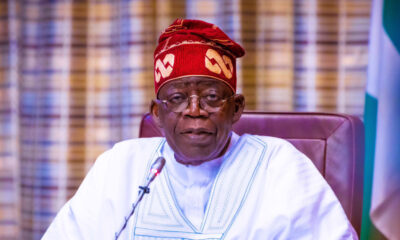Markets
With Population Growth at 2.7%, Nigeria Still Not Out of the Woods
Published
7 years agoon

- With Population Growth at 2.7%, Nigeria Still Not Out of the Woods
Notwithstanding that the Nigerian economy turned the corner by recording an expansionary GDP growth rate in the second quarter (Q2) of 2017, Nigerians, especially the country’s policymakers, should be under no illusion that the economy is out of the woods.
Although the GDP figures released by the National Bureau of Statistics (NBS) Tuesday showed that the economy grew by 0.55 per cent in Q2 2017, affirming that the economy has finally exited the recession, concerns remain that the growth could stutter, given the nation’s high population growth rate of 2.7 per cent and the attendant low income per capita, uncertainty in the oil markets, tepid consumer spending, and high inflation and unemployment rates.
It is noteworthy that the muted Q2 2017 growth rate of 0.55 per cent (year-on-year) was 2.04 per cent higher than the corresponding quarter of 2016 (-1.49%) and higher by 1.46 percentage points over the -0.91 per cent recorded in the preceding quarter, but 1.95 percentage points lower than the South African economy, which like Nigeria exited its recession in the same period under review by growing by 2.5 per cent.
According to the report, Nigeria’s economic recovery was driven principally by the performance of four main economic activities comprising oil, agriculture, manufacturing and trade.
Clearly, the growth rate was driven mainly by oil sector GDP, which recovered significantly by 17.04 percentage points from the -15.40 per cent recorded in Q1 2017 to 1.64 per cent in Q2 2017, reflecting the relative peace in the Niger Delta and increased oil output from the region.
Expectedly, this rubbed off positively on the electricity and gas sector, which also grew significantly by 35.5 per cent, compared to the contractions of 5.04 per cent in Q1 2017 and 10.46 per cent in Q2 2016.
Nevertheless, while oil GDP expanded considerably in the second quarter of 2017, non-oil GDP only grew slightly by 0.45 per cent, down from 0.72 per cent in the preceding quarter.
The non-oil sectoral breakdown showed that the agriculture sector, which should be the main growth driver in the government’s quest to diversify the economy, grew by only 3.01 per cent in Q2 2017, down from 3.39 per cent in Q1 2017 and 4.53 per cent in Q2 2016.
Manufacturing also declined to 0.64 per cent, compared to 1.36 per cent in Q1 2017, while trade which has a dominant share of GDP remained negative at -1.62 per cent, but the contraction in the sector decelerated from the -3.08 per cent recorded in Q1 2017.
The NBS report further showed that industry grew positively by 1.45 per cent in Q2 2017, after nine consecutive quarters of negative growth since Q4 2014.
Similarly, financial services sector grew by 11.78 per cent in Q2 2017, compared to 0.60 per cent in Q1 2017 and -13.24 per cent in Q2 2016.
But while the figures showed that the economic contraction appears to have petered out, Nigeria’s per capita income did not grow fast enough because its population growth rate of almost 3 per cent outpaced GDP growth.
Of greater significance, the Q2 2017 growth rate was primarily oil sector driven, which should sound a note of caution to the managers of the economy and policy makers, because further growth in the sector would most likely be muted in subsequent quarters, and bring to the fore the need to implement policies that would drive non-oil sector growth.
Indeed, Lagos-based Financial Derivatives Company (FDC), a financial advisory and research firm, pointed out that as the economy slowly crawled out of the recession, there was evidence to show that Nigeria is afflicted by general poverty, with abject poverty in the North-eastern part of the country.
The per capita income is used to measure the average income in a given population, and is used to compare the wealth of one population with those of others. It also measures a country’s standard of living and helps to ascertain a country’s development status. It is one of the three measures used for calculating the Human Development Index (HDI) of a country.
Buttressing his firm’s view in a phone chat with THISDAY Tuesday, the chief executive of FDC, Mr. Bismarck Rewane, explained that with the growth rate at 0.55 per cent and population growth at 2.7 per cent, the situation remains dire because Nigeria produces 14,000 children everyday.
At 0.55 per cent, the output growth rate can only cater to 3,000 children, he said.
“So, if you go by growth alone, 11,000 children would starve to death. What this means is that your growth rate is below your population growth rate, so for you to take care of the unemployed, you would need to grow at about 5.5 per cent. And we are far below what is needed to start celebrating.
“All you will see in Nigeria now is that everybody would want to start taking credit for what they did not do. What happened was essentially driven by increased oil production, so nobody should take any credit for that.
“Secondly, the sectors that recorded growth were electricity and gas, trade and financial services. Electricity went up because the pipelines were not sabotaged and we saw a spectacular performance in the sector.
“Trade performed because of the improved availability of foreign exchange to the sector. In terms of financial services, all they did was basically to take deposits and buy treasury bills, while credit to the private sector contracted.
“Now, the sectors that went down were agriculture, manufacturing, construction and real estate, because all of these were hit by high-interest rates. The implication is that if we don’t bring down interest rates, growth is going to be anaemic,” he warned.
In comparing Africa’s two largest economies, Rewane said the reason the South African economy grew by 2.5 per cent while the Nigerian economy stuttered to 0.55 per cent was because the South African central bank reduced interest rates, thus making access to capital cheaper for businesses and individuals.
“We cannot grow our economy if interest rates remain high and the government continues to crowd out the private sector. All the financial services sector did was to invest in treasury bills; that is what drove growth in the sector.
“Meanwhile, the real sectors of the economy such as manufacturing and agriculture suffered because they could not borrow at the high-interest rates offered by the banks. That was the main differentiator between Nigeria and South Africa,” he said.
Also, although the Chief Economist for Africa at Standard Chartered Bank, Razia Khan, welcomed the transition back into positive territory for the Nigerian economy, she said she had expected stronger growth.
According to Khan, while improved oil production had driven some of the recoveries, she said the output numbers provided by NBS (1.84 million bpd) suggested that a further upside from this source might be limited.
This, Khan warned, “is not at all a robust GDP print” for the country.
“We also need to take into account that the revised estimate for Q1 GDP growth had an even sharper contraction in GDP at the start of the year (-0.91% year-on-year from -0.52% previously).
“So while many will focus on the headline move back into positive territory, some of that optimism must necessarily be tempered. It still falls far short of the growth rates the Nigerian economy should be achieving.
“The one hope is that an improved forex backdrop will see further acceleration in the non-oil GDP performance over the coming months. Improved execution of the capital expenditure budget should also help,” she noted.
To Lagos-based CSL Stockbrokers Limited, the capital flows which had exited the Nigeria economy last year due to unclear monetary policies, inflationary pressures, and foreign exchange illiquidity, were now flowing back into the economy following the forex policy changes in February.
The firms stated further that with the introduction of the investors’ and exporters’ FX window (I &E window), and the subsequent harmonisation of FX rates, foreign investors that previously sat on the sidelines were fast moving back into Nigeria.
In all, the consensus among analysts was the need for badly needed structural reforms to take Nigeria out of the woods.
The reforms, they posited, should be a combination of monetary and fiscal policies that would create jobs, increase the disposable income of Nigerians and lift more citizens out of poverty.
The good thing is that the federal government’s response to the GDP data released by the NBS Tuesday has been subdued.
This was the surest sign that the managers of the economy were very conscious of the fact that the figures were merely esoteric and would only be felt when living standards begin to look up.
Is the CEO and Founder of Investors King Limited. He is a seasoned foreign exchange research analyst and a published author on Yahoo Finance, Business Insider, Nasdaq, Entrepreneur.com, Investorplace, and other prominent platforms. With over two decades of experience in global financial markets, Olukoya is well-recognized in the industry.

You may like
-


Nigeria’s GDP Records 3.46% Growth in Q3 Spurred by Non-Oil Sector
-


President Tinubu Presents N47.9trn 2025 Budget As Debt Servicing, Security, Infrastructure Take Lion Shares
-


I’m Not Nigeria’s PR, UK Party Leader, Kemi Badenoch, Tells Shettima
-


Nigeria and France Forge Strategic Alliance to Boost Solid Minerals Sector
-


Zhongshang Fucheng Moves to Auction Nigerian Properties in UK Following $70M Arbitration Award
-


Nigerians and Indians Lead UK Job Market Growth Amid Post-Brexit Migration Shifts









